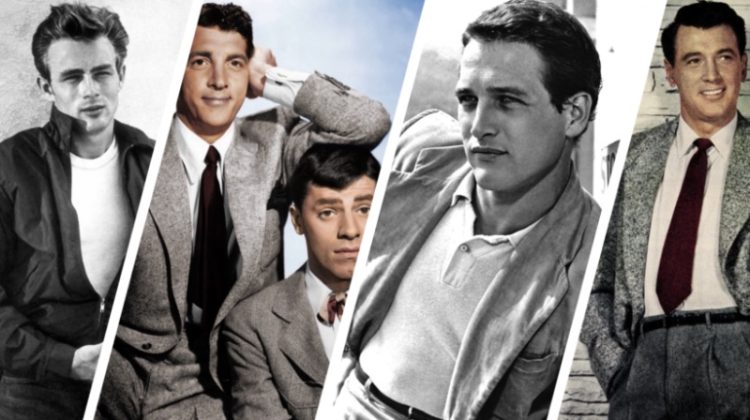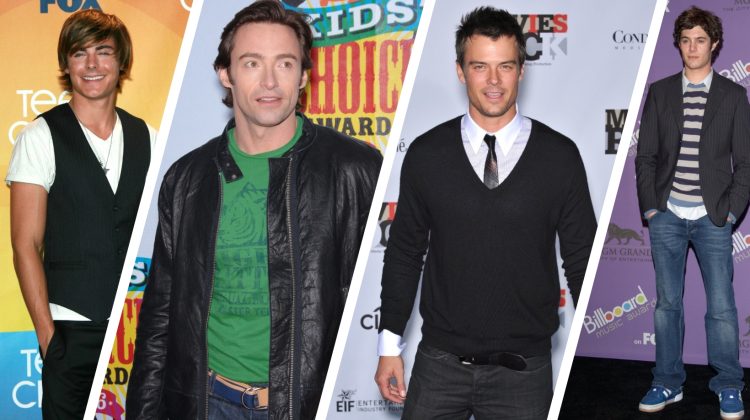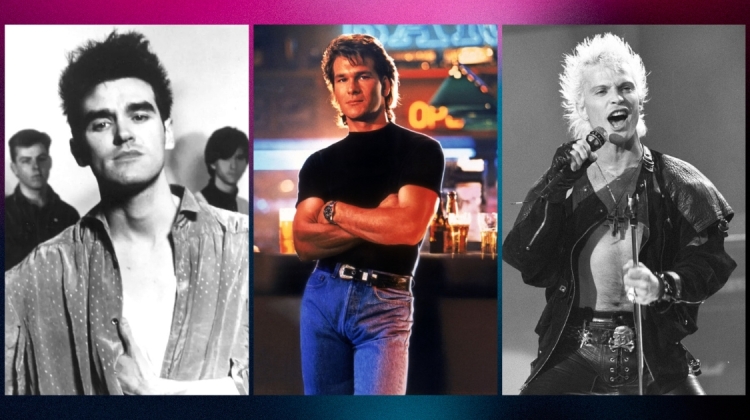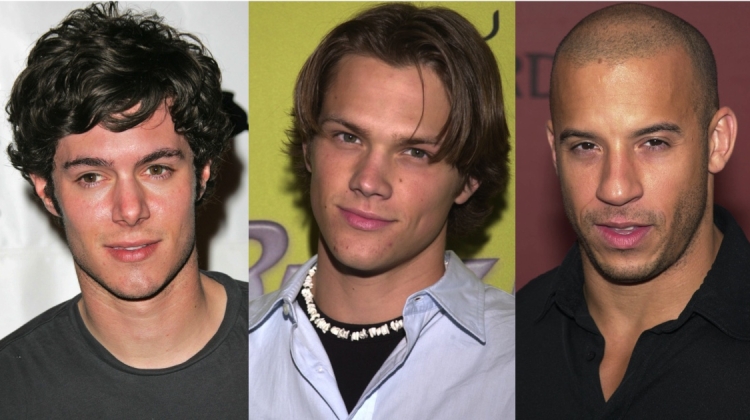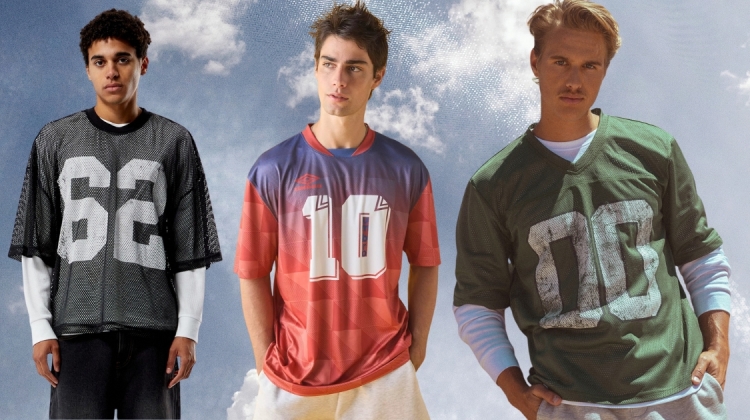
90s men’s fashion was bold, unapologetic, and all about self-expression. From the grungy streets of Seattle with oversized flannel shirts to the flashy energy of New York City with leather jackets, it was a decade where men embraced experimentation and stepped outside the mold.
It was a time when fashion became a way to stand apart—loud, layered, and rooted in identity. From streetwear to subcultural staples, 90s outfits for men reflected the energy of the era, shaped by music, film, and youth culture. These were the defining looks of a decade that left a lasting imprint on men’s style.
90s Fashion for Men
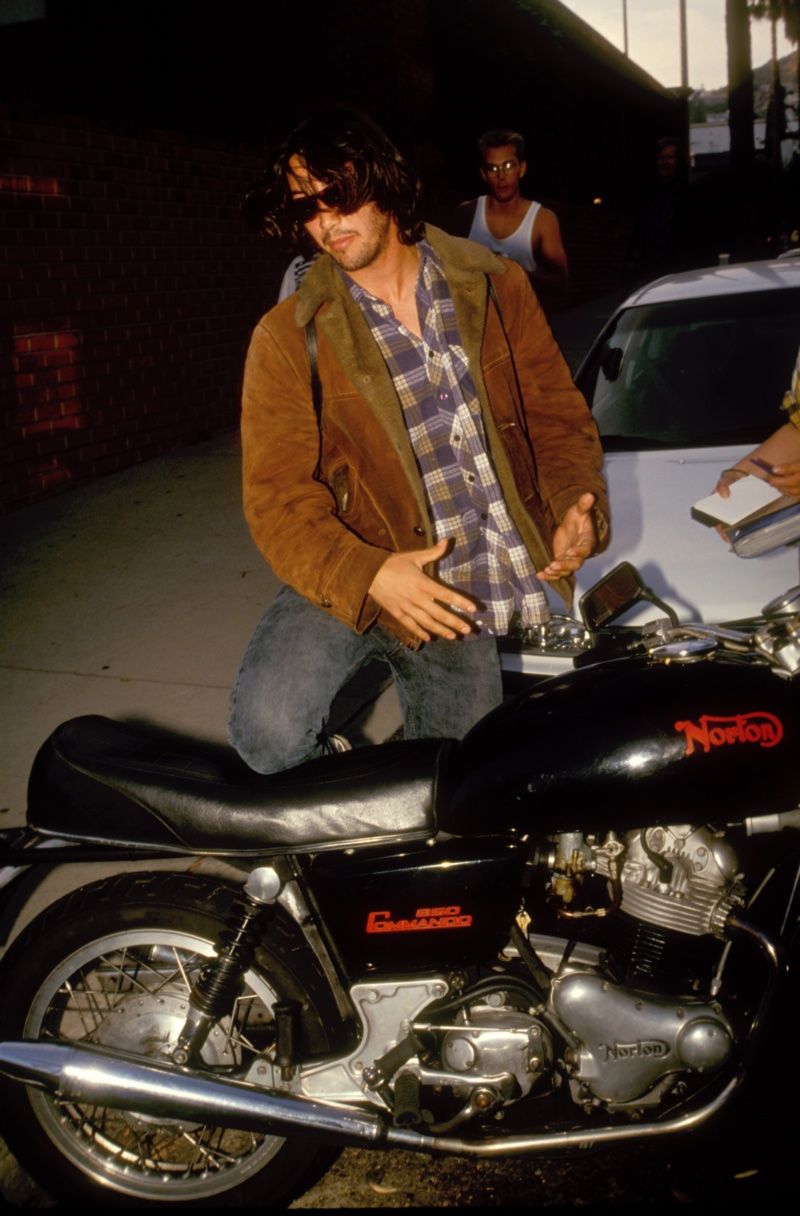
The nineties were a time of cultural shifts and new beginnings. As early tech and emerging music scenes took shape, 90s fashion trends for men carved out a distinctive identity—bold, expressive, and ever-changing.
The defining trait of 90s style was its non-conformity. Unlike the polished looks of past decades, 1990s men’s fashion favored oversized fits, clashing patterns, and a mix of subcultural influences.
In a newly globalized world shaped by the internet, personal style gained urgency. Men’s 90s fashion became a way to reject sameness, adopt new perspectives, and let individuality lead.
Clothing
Baggy Jeans & Cargo Pants
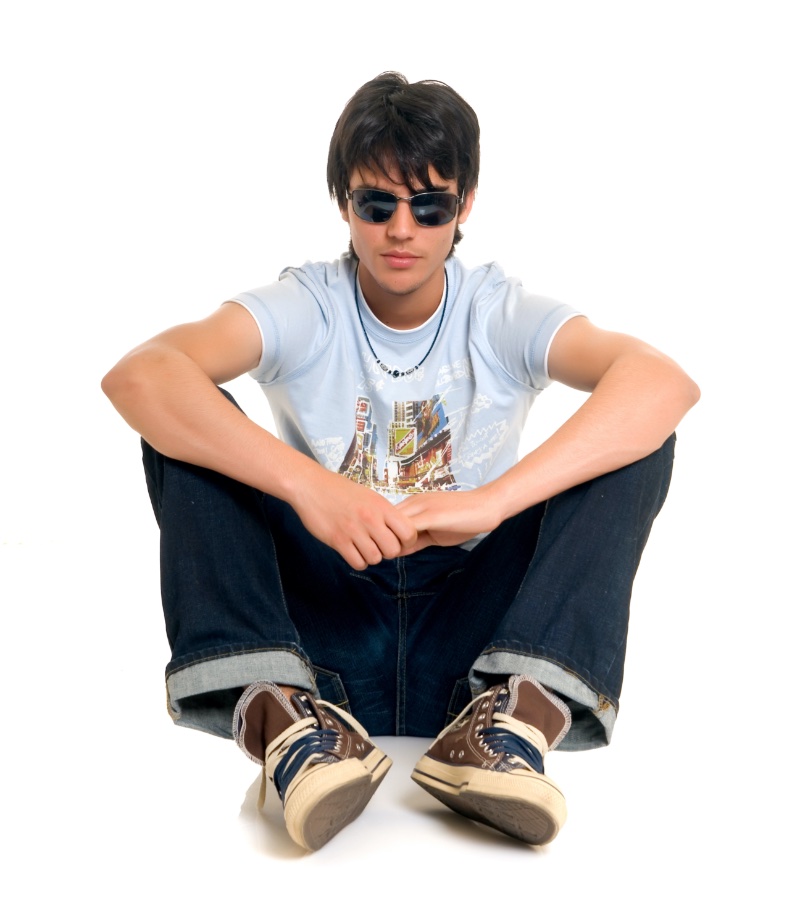
When asking how did men dress in the 90s, one of the most defining answers lies in the rise of baggy jeans. Worn low and oversized, this denim trend was cemented by hip-hop icons like Tupac and LL Cool J, whose off-duty style became cultural shorthand for street credibility.
Baggy jeans captured the decade’s attitude—relaxed, bold, and rooted in self-expression. Cargo pant styles followed suit, offering a utilitarian edge with their pocket-heavy design, perfect for everything from outdoor hangouts to weekend errands.
Bomber Jackets
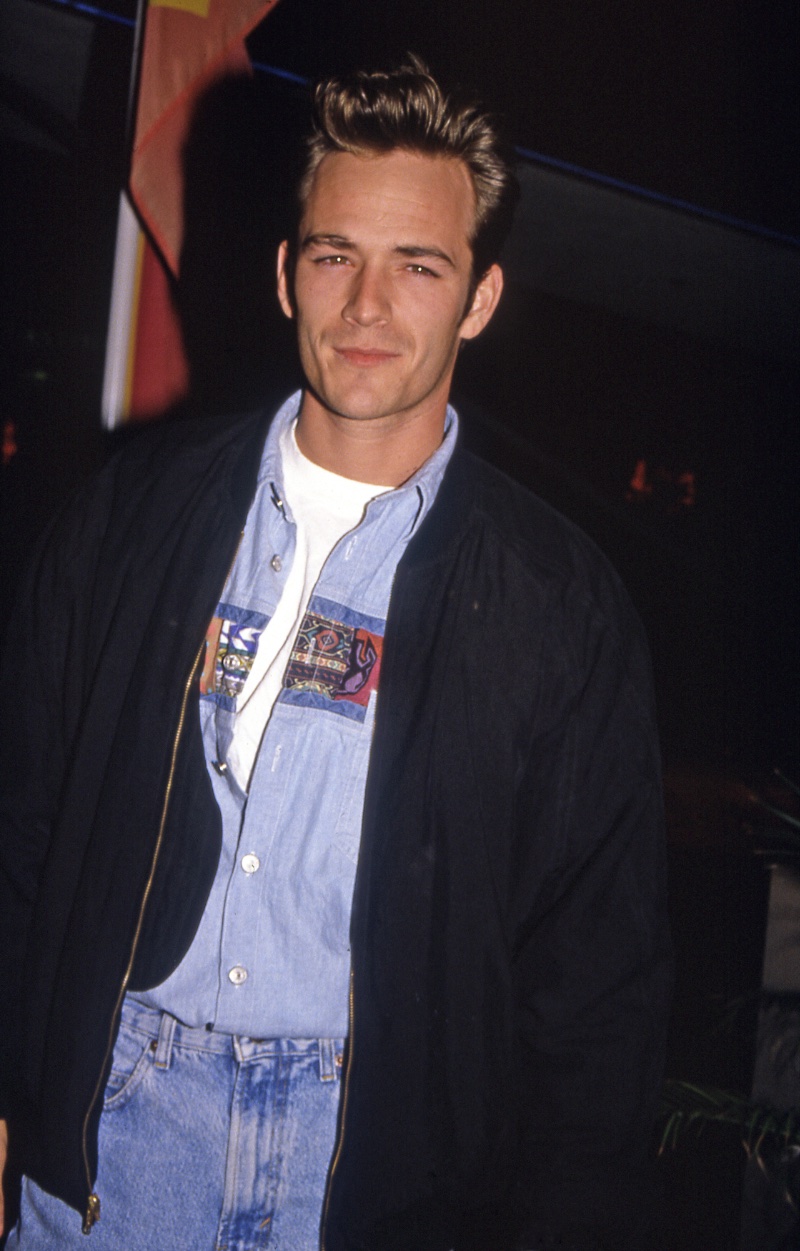
The bomber jacket became a cornerstone of the 90s men’s outfit, prized for its versatility. Often styled with high-top sneakers, denim jeans, and oversized tees, it served as a go-to staple for fashion-conscious men throughout the decade.
Its relaxed fit and comfortable fabric made layering easy, while the distinct silhouette brought a dose of attitude to any casual look.
Oversized Graphic Tees & Flannels
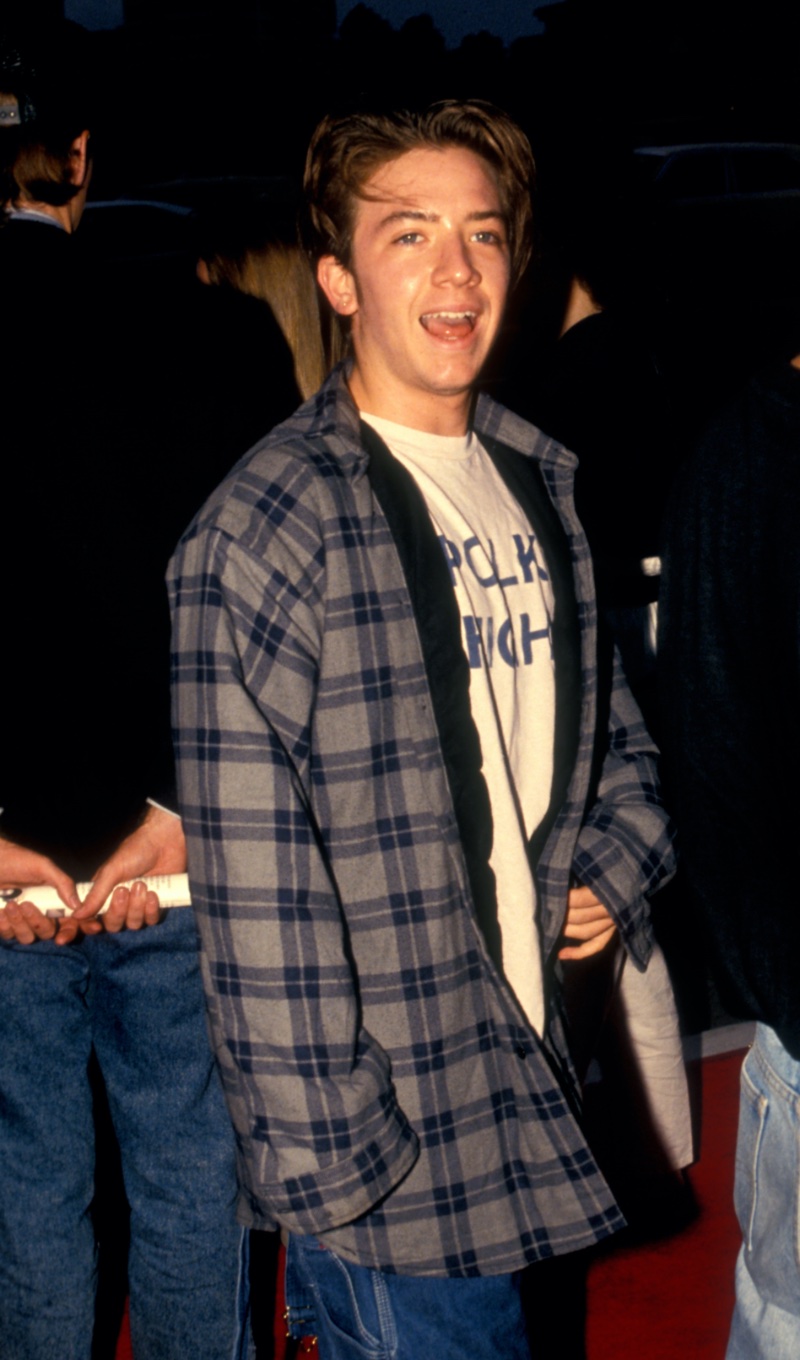
The 1990s were all about being bold and making a statement with your clothing choices, which is why oversized graphic tees were so popular. Brightly colored t-shirts featuring logos of popular brands like Tommy Hilfiger and Calvin Klein became staples in many men’s wardrobes.
The tees were often paired with baggy jeans or cargo pants to complete the look. Another staple was the flannel shirt. This versatile piece could be worn as a shirt or jacket and was often tied around the waist for a grunge-inspired look.
Neon Windbreakers
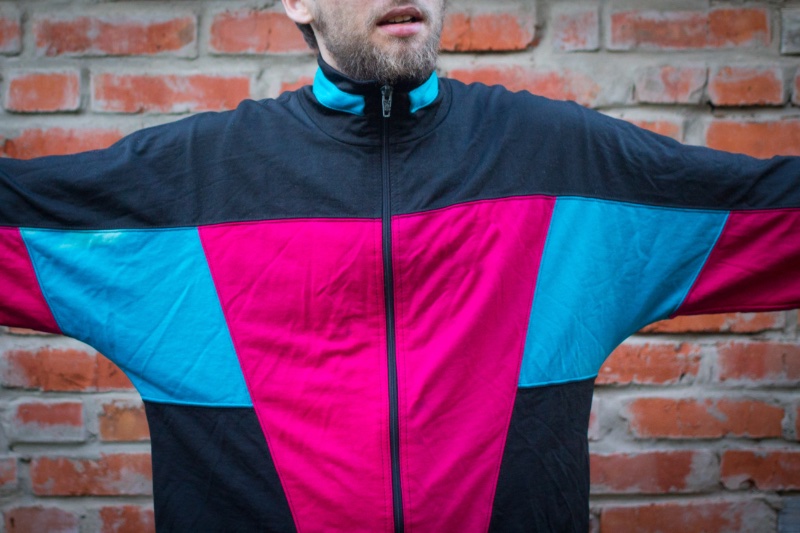
Neon windbreakers became a standout piece in any men’s 90s outfit, capturing the decade’s love for bright colors and bold patterns. Lightweight and eye-catching, these jackets were embraced by sports fans, ravers, and anyone eager to stand out.
With brands like Adidas, Nike, and Starter at the forefront, the neon windbreaker reflected the fun, adventurous spirit that defined the 90s zeitgeist.
Turtlenecks
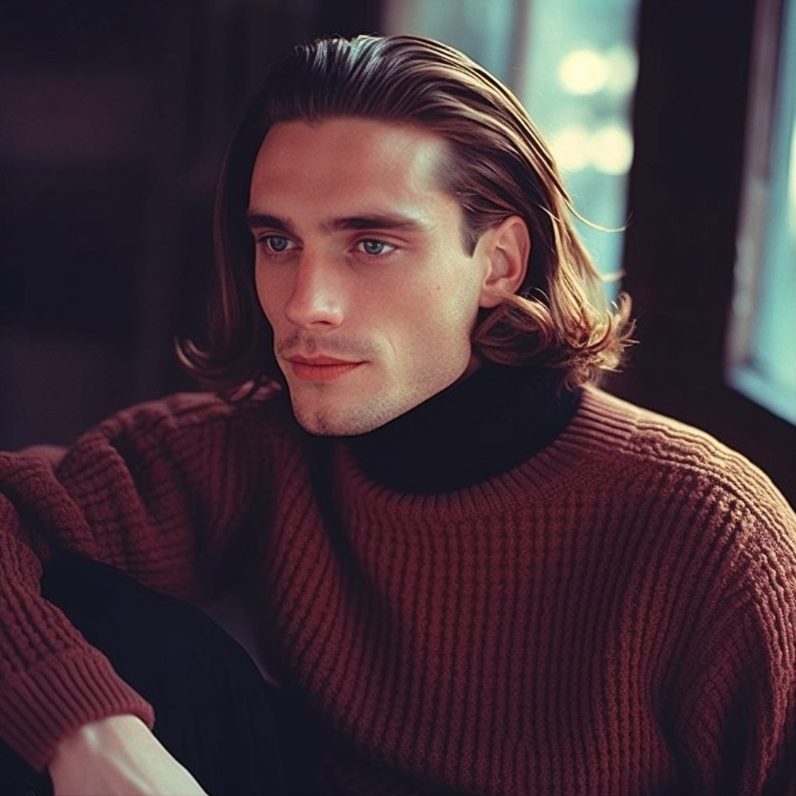
Turtlenecks played a significant role in shaping 1990s men’s style. Versatile and timeless, they were embraced across subcultures and age groups, offering a balance of sophistication and ease. Their popularity stemmed from both function and fashion—keeping warm while serving as a statement piece that could be dressed up or down.
Overalls
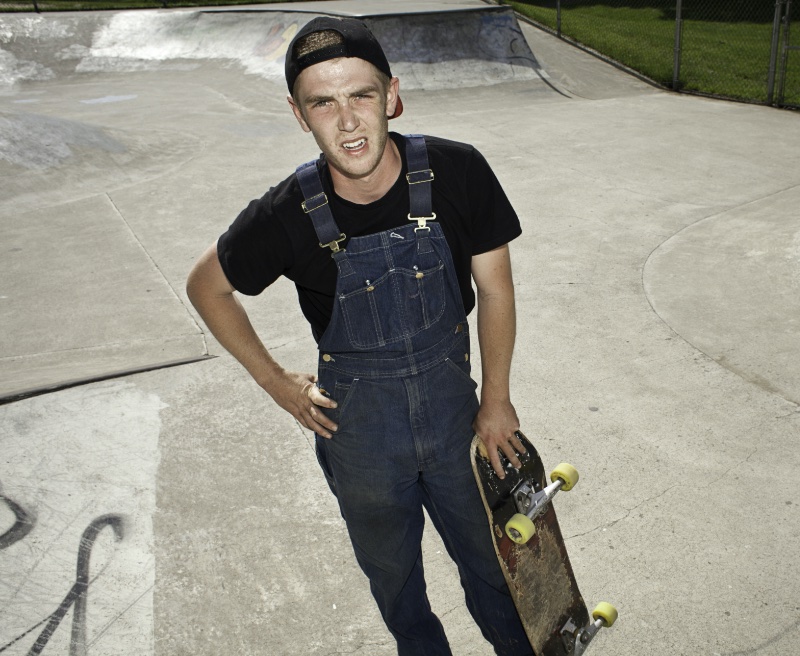
Initially a workwear staple, overalls were popular among men as a versatile and comfortable garment. They could be dressed up or down, worn with one strap unfastened, or paired with graphic tees and flannel shirts for a grunge-inspired look. Celebrities like Will Smith and Tupac Shakur helped to popularize this trend.
Minimal Fashion
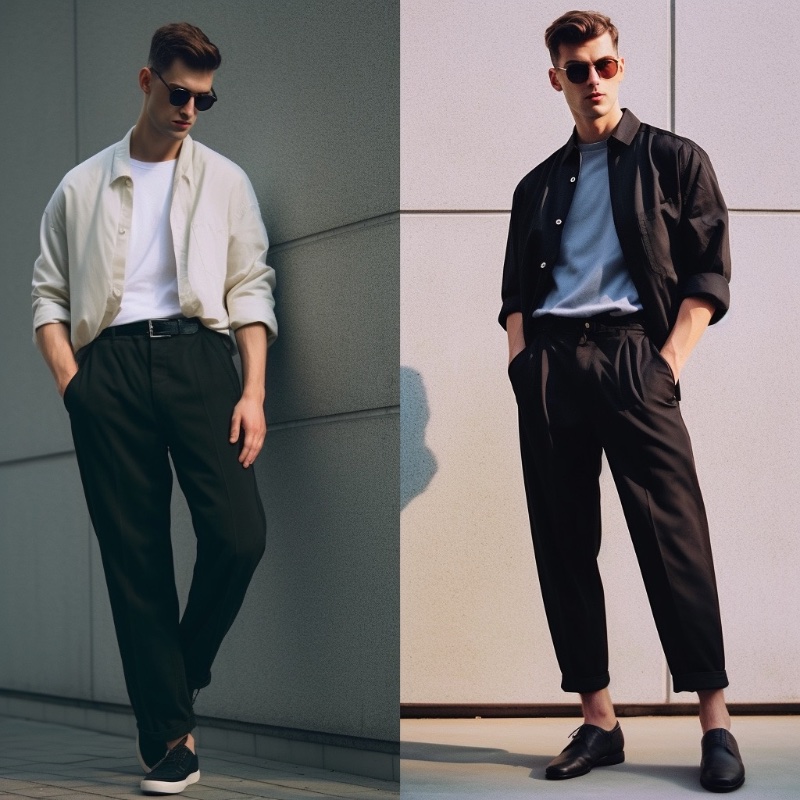
What did men wear in the 90s? Alongside streetwear and grunge, the decade embraced minimal fashion for men—an aesthetic defined by simplicity, clean lines, and neutral palettes. This stripped-down style stood in sharp contrast to the bold colors and exaggerated silhouettes of 80s men’s fashion, signaling a shift toward restraint and understatement.
Designers like Calvin Klein, Helmut Lang, and Jil Sander led the charge, refining men’s wardrobes with restraint and clarity. Minimal fashion emphasized high-quality materials, sharp tailoring, and an understated presence. Its appeal lay in offering a timeless, refined look that let men express individuality without the noise of trends.
Sports Jerseys
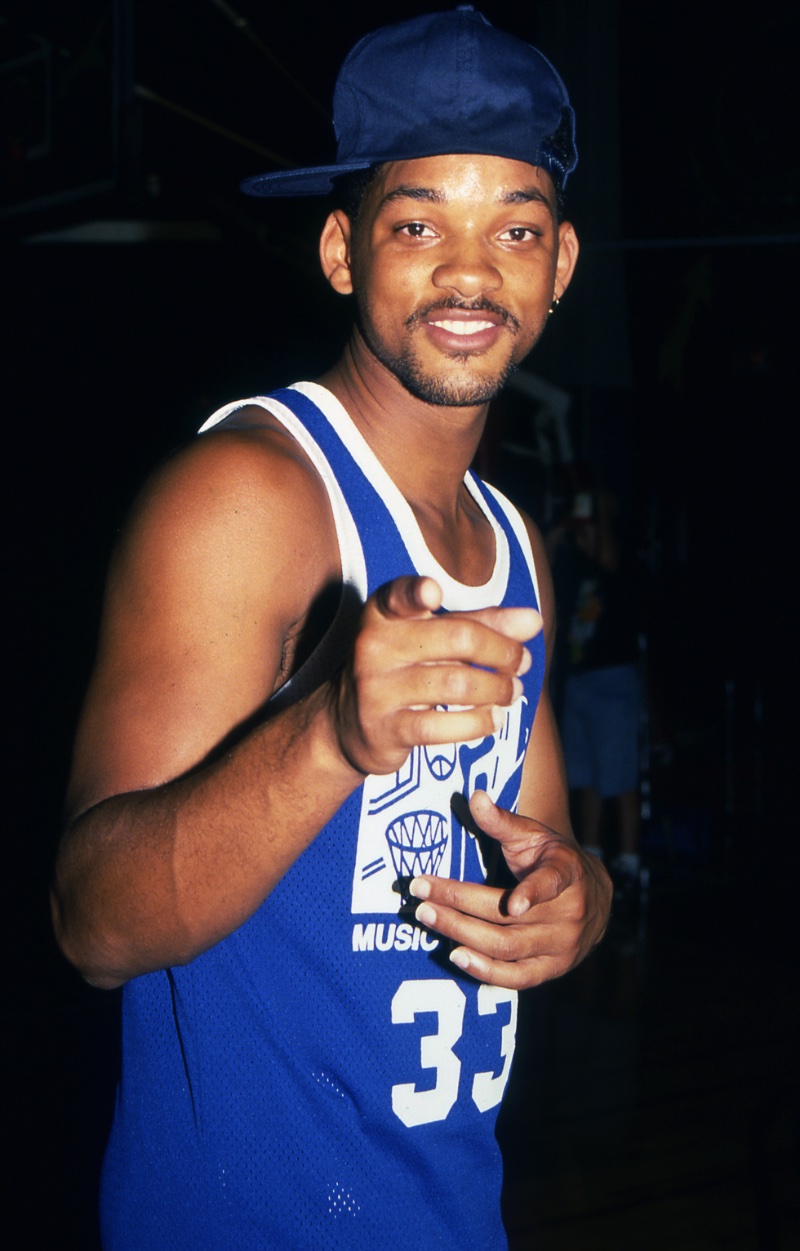
The 1990s witnessed a boom in the popularity of sports jerseys as a defining element of 90s style for men. Worn by both sports fans and the fashion-forward, these jerseys became symbols of team pride and personal flair.
Iconic basketball, football, and baseball designs—featuring legends like Michael Jordan, Deion Sanders, and Ken Griffey Jr.—quickly turned into coveted wardrobe staples. Their bold colors, oversized fits, and striking logos embodied the essence of 90s men’s street style.
Typically paired with baggy jeans or shorts and a backward cap, sports jerseys owed much of their widespread appeal to the influence of hip-hop culture.
Denim Shorts
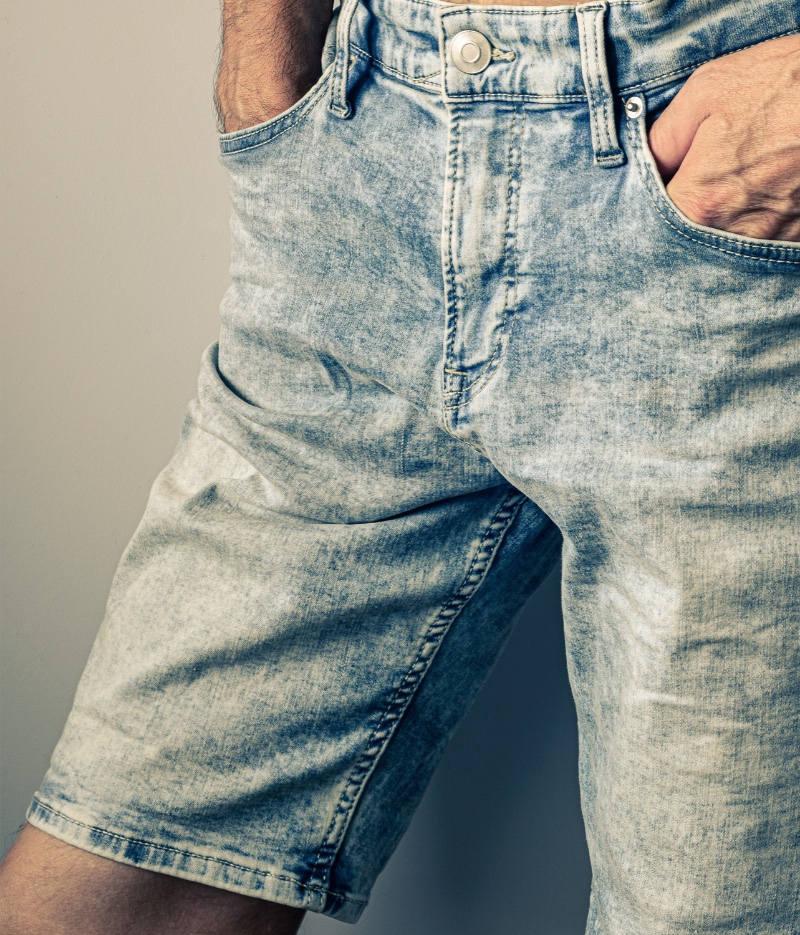
Denim shorts emerged as a popular choice for men, reflecting the decade’s penchant for casual and comfortable fashion. These versatile and durable garments were available in various lengths, washes, and styles, giving men multiple options to express individuality.
Longer denim shorts, commonly known as “jorts,” often fell to the knee or just below and were a staple in skater and grunge culture. Additionally, distressed and frayed hems became increasingly popular, adding an edgy touch to the laid-back look.
Loose-cut Suits
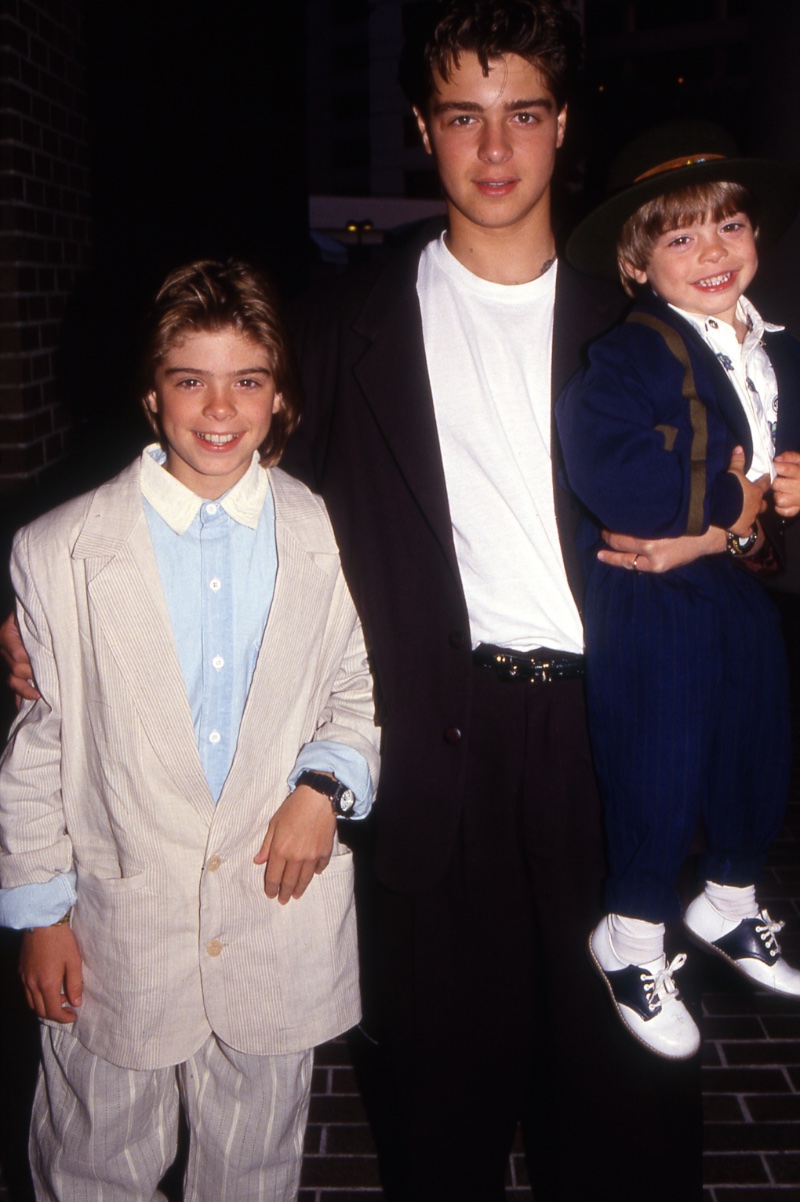
The 1990s marked a distinctive era for men’s suits, emphasizing looser fits, bold patterns, and various textures. As the decade shifted towards more casual and relaxed styles, suit jackets became more oversized, often featuring broad shoulders and longer silhouettes. The suit pants also mirrored this trend, with roomier cuts and pleats becoming increasingly popular.
While traditional colors like navy, black, and gray remained staples, the 90s also embraced bolder patterns, such as pinstripes, checks, and houndstooth. Fabrics like tweed, linen, and lightweight wool added variety and depth to suit selections. Celebrities like David Schwimmer, Keanu Reeves, and Pierce Brosnan showcased these styles on and off the screen, influencing how men dressed for professional and formal occasions.
Denim Jackets & Vests

Denim jackets were huge in the 90s, especially oversized ones that could be worn over multiple layers of clothing. They were often adorned with patches, pins, or embroidery to add a personal touch.
Denim vests were also popular among biker gangs and rockers who wore leather biker jackets for an edgier look. Whether you prefer classic blue denim or something more unique like acid wash or tie-dye, there’s no denying that denim jackets and vests were an essential part of casual 90s men’s fashion.
Footwear
Chunky Sneakers & High-top Basketball Shoes
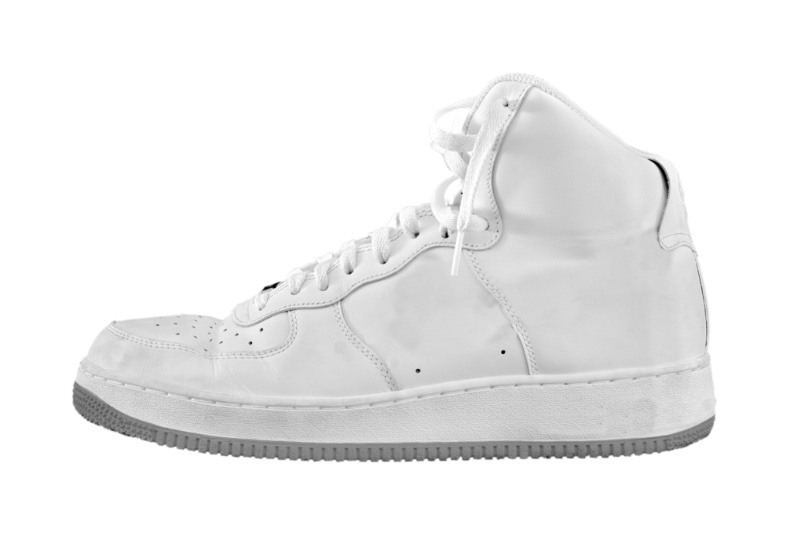
Fashion was all about being comfortable and confident at the same time. This is reflected in the footwear as well. Chunky sneakers were all the rage, with brands like Nike, Reebok, and Adidas leading the charge. These shoes had a thicker sole and a bulkier look than you would see in footwear today.
They were perfect for completing an oversized outfit with baggy jeans or shorts. On the other hand, high-top basketball shoes also appeared in 90s men’s fashion thanks to NBA icons like Michael Jordan and his famous Air Jordans.
Timberland Boots
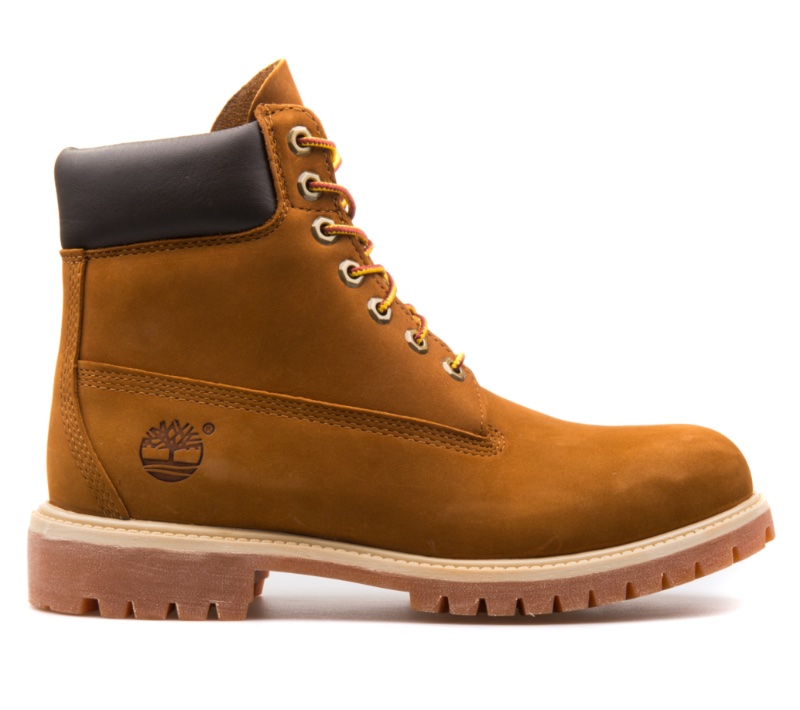
Timberland boots became a staple as well. These sturdy boots were originally designed for construction workers but quickly became mainstream culture thanks to rappers like Wu-Tang Clan, who often wore them on stage or in music videos. Their iconic yellow color promptly became associated with hip-hop culture and could be seen on street corners everywhere.
Sandals with Socks

Sandals with socks were among the most debated aspects of 90s men’s footwear. While it might seem like a fashion faux-pas now, this quirky trend was quite popular. Pairing sandals with chunky socks allowed you to wear sandals even when it wasn’t warm enough outside. It might not have been everyone’s cup of tea, but those who dared to try it stood out.
Accessories
Bucket Hats & Snapback Hats
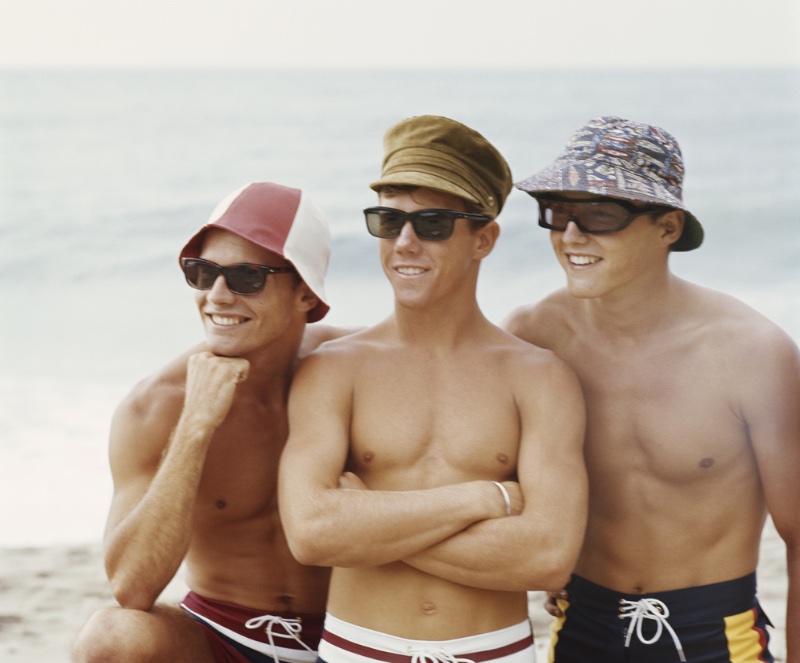
Accessories were a big deal, and hats were no exception. Bucket hats and snapback caps were hugely popular among men. Entertainers like rapper LL Cool J helped bucket hats remain mainstream. Made from cotton or denim fabric, they comfortably fit any head size. They often came in plain colors like black or navy blue but could also be found featuring bold patterns or logos.
The snapback hat was recognizable by its adjustable strap at the back, which could be tightened or loosened depending on the wearer’s head size. This type of baseball cap often featured bold logos or text on the front panel, making it a statement piece that matched well with oversized graphic tees and baggy pants.
Gold Chains & Hoop Earrings
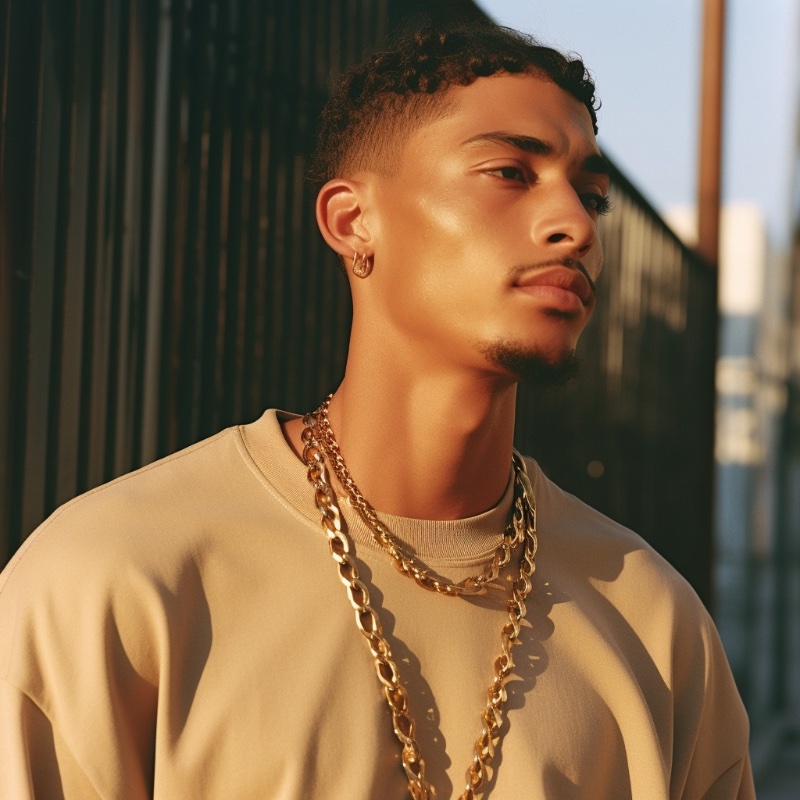
In this era, less wasn’t the goal—jewelry made statements. Gold chains, often layered and hanging low past the navel, signaled wealth and power across music, sports, and film. Hoop earrings also surged in popularity, with men sporting large gold hoops—sometimes multiple—on a single ear to assert a bold new style.
Sunglasses with Colored Lenses
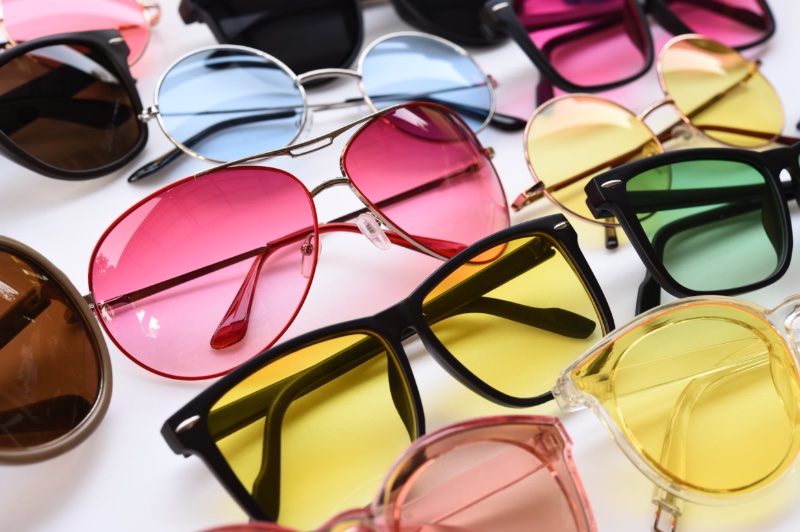
Sunglasses have always been a cool, fashionable accessory, but in the 90s, colored lenses took the trend to a whole new level. Men wore sunglasses with lenses tinted in bright hues like red, blue, or yellow. Some even wore lenses that were entirely reflective or had a gradient effect.
These shades were often seen on the faces of celebrities like Will Smith and LL Cool J and became a must-have item for any fashion-conscious man.
Shell Necklaces
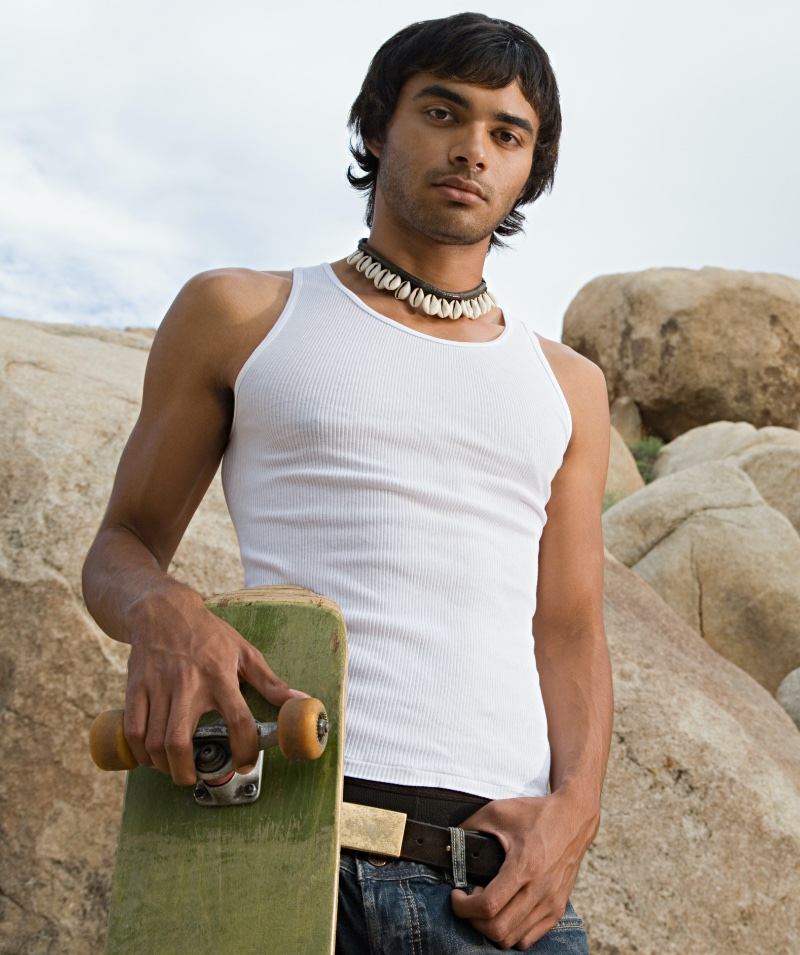
One iconic trend of the decade was the shell necklace, which gave outfits a beachy and bohemian touch. Often made with puka shells or other natural materials, these necklaces became a staple in surf and skater culture and were embraced by celebrities and mainstream fashion enthusiasts.
Velcro Wallets
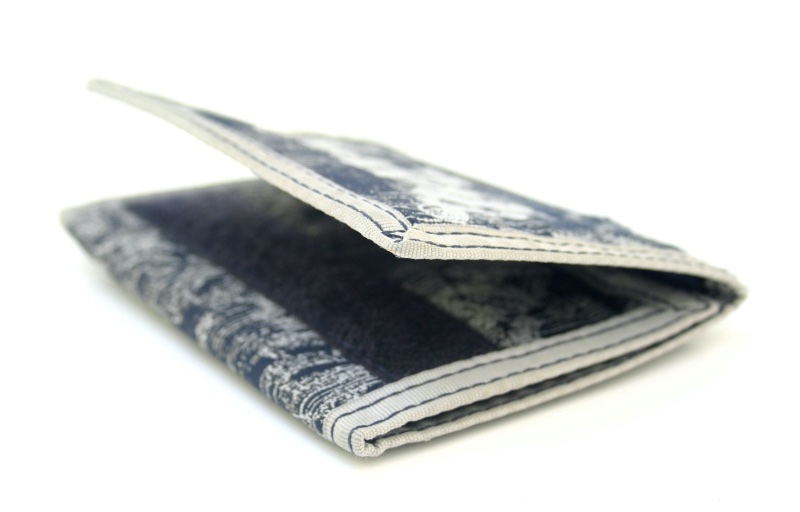
Known for their convenience and durability, these velcro wallets were functional and customizable, featuring various designs, colors, and patterns. Brands like JNCO, Quiksilver, and Vans were pivotal in promoting these accessories, making them essential wardrobe components.
Fashion Subcultures
Skater Culture
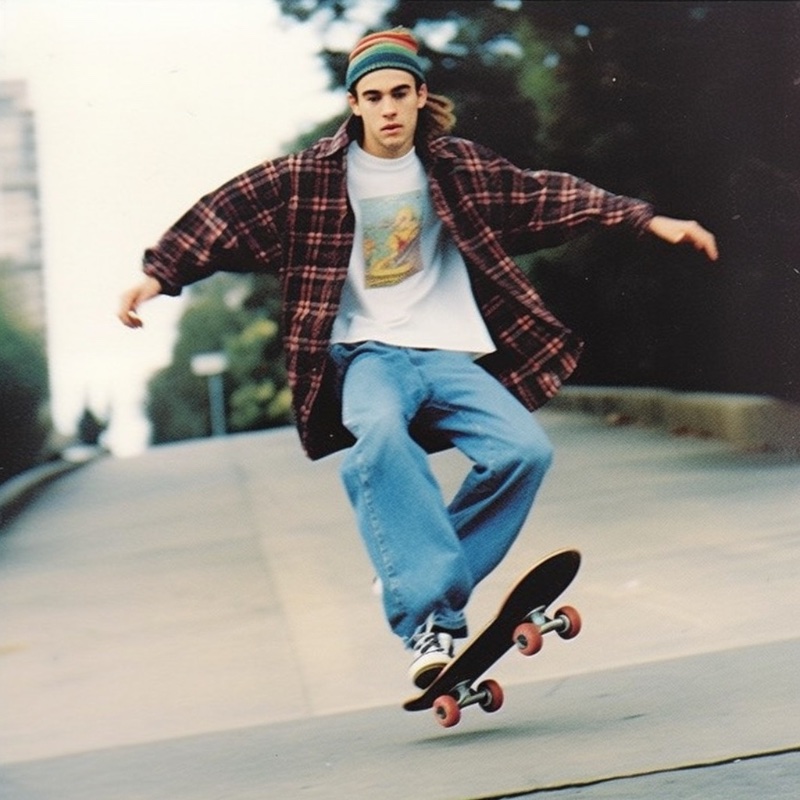
The nineties was a golden era for skateboarding and the culture surrounding it. From Southern California to New York City, skaters had a unique sense of fashion that included baggy jeans, oversized graphic tees, and iconic Vans sneakers. The brand’s classic slip-on and Old Skool models quickly became staples in any skater’s wardrobe.
Thrasher magazine was also a must-have accessory, often worn as a statement piece of clothing with its bold flame logo. The style wasn’t just about looking cool on the board and expressing a rebellious attitude toward mainstream fashion.
Hip-Hop Culture
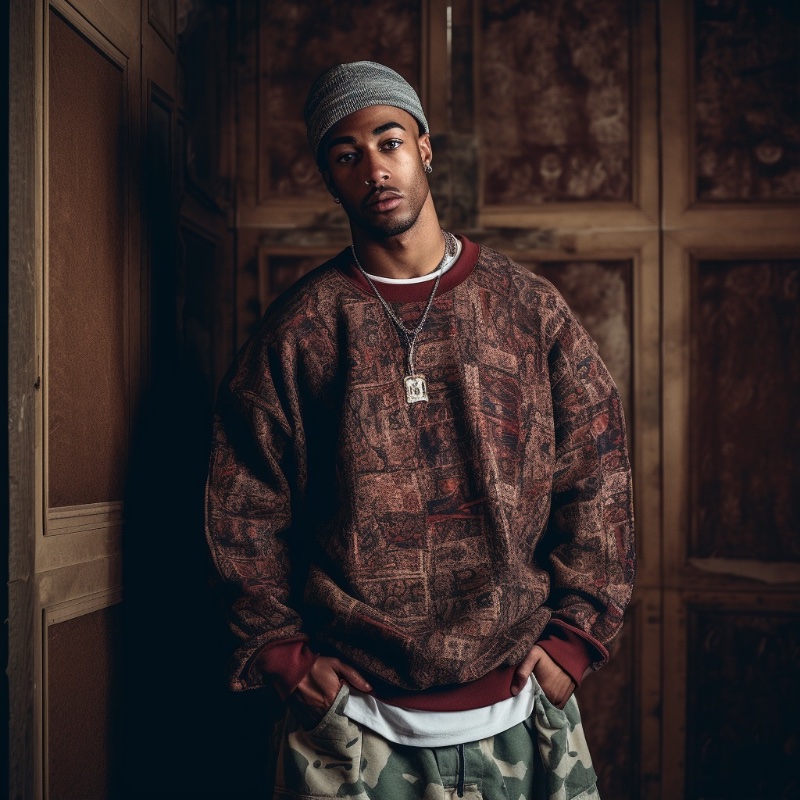
Hip-hop style was all about being flashy and bold. FUBU (For Us By Us) was one of the most notable brands that catered to black youth culture. Their clothes were often adorned with large logos or slogans like “05,” representing their neighborhood or area code.
Another brand that took the hip-hop world by storm was Tommy Hilfiger. Despite not initially being intended for black audiences, Hilfiger’s red-white-and-blue logo became synonymous with hip-hop thanks to rappers like Snoop Dogg and Aaliyah sporting it in music videos.
Grunge Culture
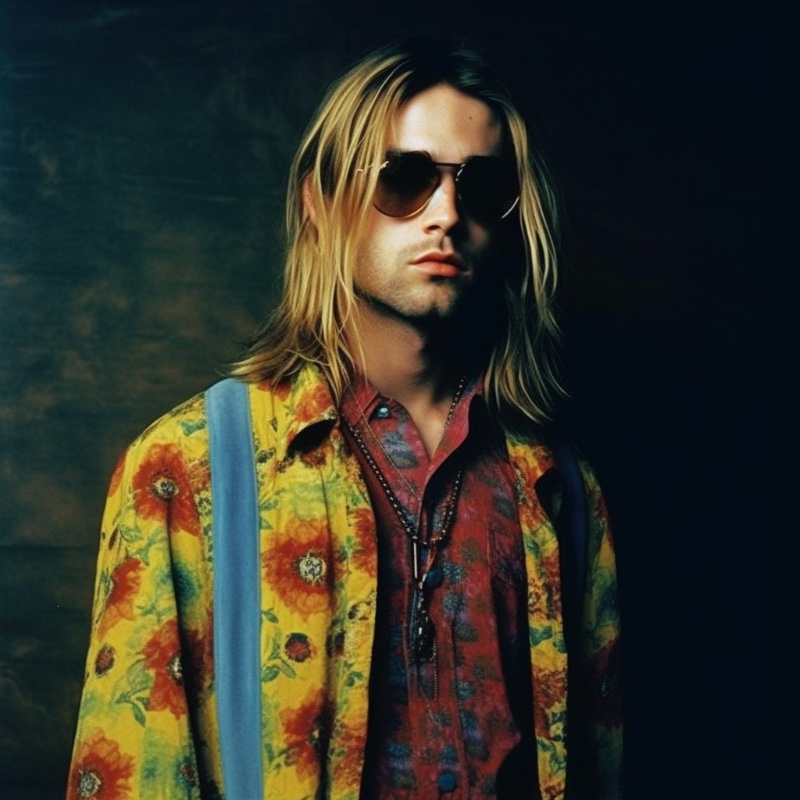
Grunge fashion focused on rebellion and non-conformity, rejecting mainstream fashion and embracing DIY aesthetics. This included combat boots or Doc Martens paired with ripped jeans or plaid shirts tied around waistlines—hallmarks of grunge subculture accessories.
Ironically, Nirvana merchandise also became popular among grunge aficionados, as Kurt Cobain represented everything grunge stood for—authenticity over commercialization.
Hairstyles
Bowl Cuts & Curtain Hairstyles
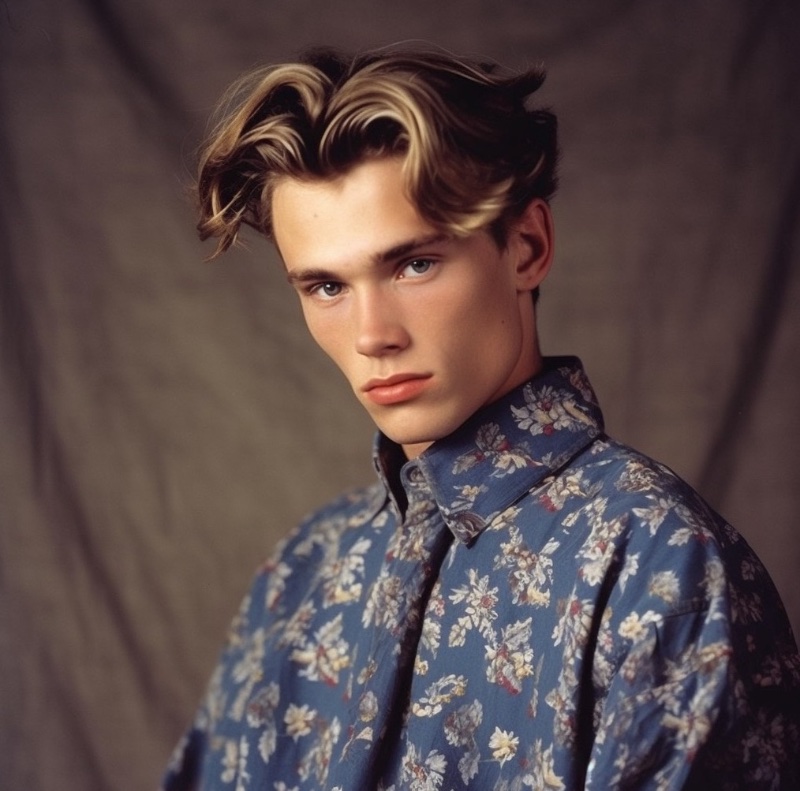
When it comes to 90s hairstyles for men, few looks defined the era like the bowl cut and the curtain hairstyle. The bowl cut featured hair trimmed in a blunt, even line around the head, creating a rounded shape that felt both graphic and subversive.
Meanwhile, the curtain hairstyle had longer strands through the center, often parted down the middle, with layered sides that framed the face. Both styles were embraced by celebrities such as Leonardo DiCaprio and Brad Pitt, helping them cross over from trend to cultural staple.
These looks remain part of the pop culture conversation decades later, reappearing in everything from editorial shoots to TikTok trends.
Frosted Tips & Spiky Hairdos
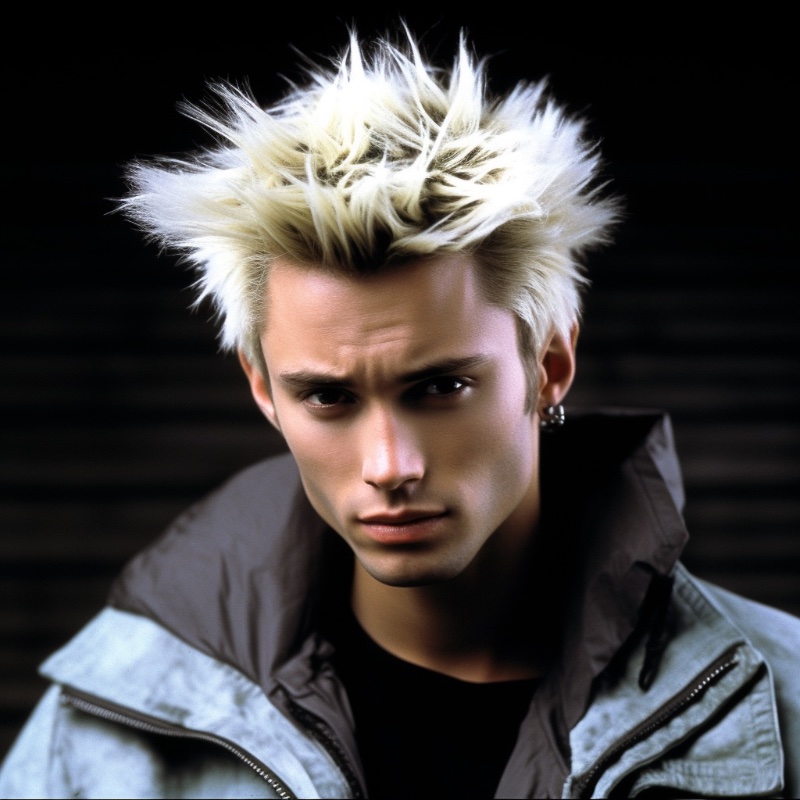
Frosted tips and spiky hairstyles were also popular during this decade. Frosted tips involve bleaching just the ends of one’s hair for a sun-kissed look, while spiked hair uses gel or wax to create spiky strands on top of one’s head.
These styles were associated with boy bands like NSYNC and Backstreet Boys, making them even more popular among young men. While these looks may seem outdated now, they were iconic back then.
It’s important to note that achieving these styles can damage your hair if done incorrectly or too frequently. Be sure to consult with your hairstylist about how often you should bleach or use styling products to maintain healthiness.
Buzz Cuts & Shaved Heads
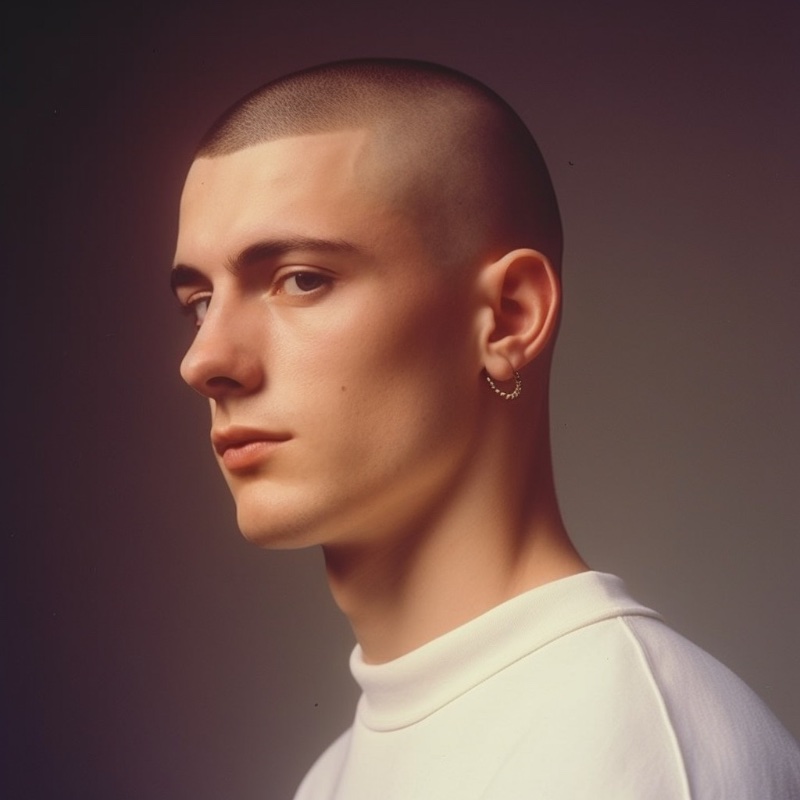
Buzz cuts and shaved heads were common choices throughout the decade, favored for their simplicity and ease. Using clippers to achieve uniform length, different guard buzz cuts allowed for subtle variation in style—ranging from barely-there trims to slightly fuller cuts—while shaved heads offered a more extreme, bare finish.
Popular among athletes and military personnel for their practicality, both styles offered a no-fuss approach that didn’t sacrifice presence. Even in their starkness, they remain a reminder that simplicity, when done right, still turns heads.
Pop Culture Influences
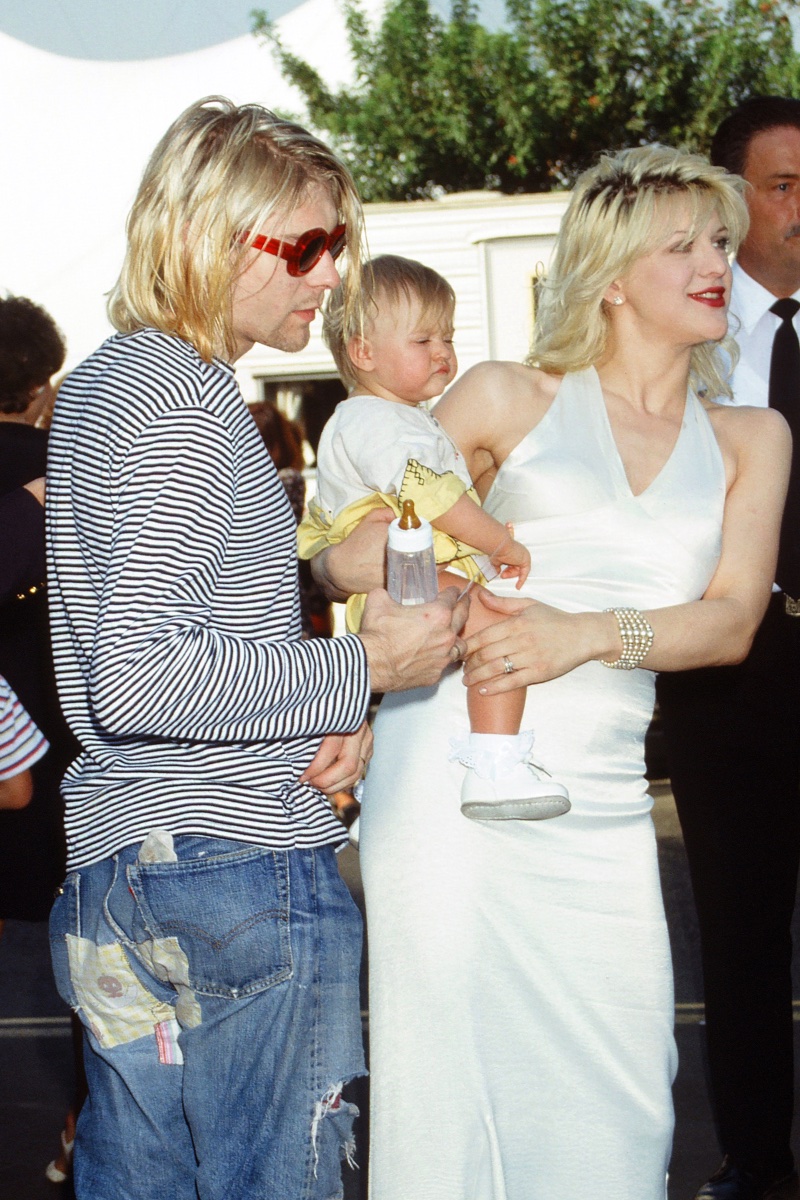
Music Icons like Tupac, Notorious B.I.G, Kurt Cobain, etc.
The 1990s was a decade of diverse music genres that influenced fashion. Music icons like Tupac Shakur, Notorious B.I.G, and Kurt Cobain were known for their unique styles that set them apart from mainstream fashion. Tupac Shakur’s love for bandanas and gold chains became a staple in hip-hop fashion.
Notorious B.I.G. was frequently seen wearing Coogi sweaters and Kangol hats, symbolizing wealth in the hip-hop community. Kurt Cobain was an icon in grunge fashion known for his ripped jeans, flannel shirts, and Converse sneakers.
These musical legends influenced clothing choices and hairstyles, such as Tupac’s signature bald head with facial hair or Biggie’s iconic fade with a part on the side. Kurt Cobain’s messy blonde hair became a defining grunge hairstyle, popular among fans of the movement.
TV Shows like Fresh Prince of Bel-Air or Saved by the Bell
Television played a major role in shaping 90s clothing style for men. The Fresh Prince of Bel-Air pushed bold colors and graphic prints into the mainstream, with Will Smith’s character pairing vibrant sneakers with equally loud shirts. Carlton Banks countered with preppy staples like sweater vests layered over button-ups.
Meanwhile, Saved by the Bell leaned into teenage trends—acid-wash denim jackets, neon pants, and layered looks that mirrored what was hot in malls and music videos. These shows encouraged men to experiment, drawing inspiration straight from their screens.
Remembering the 90s
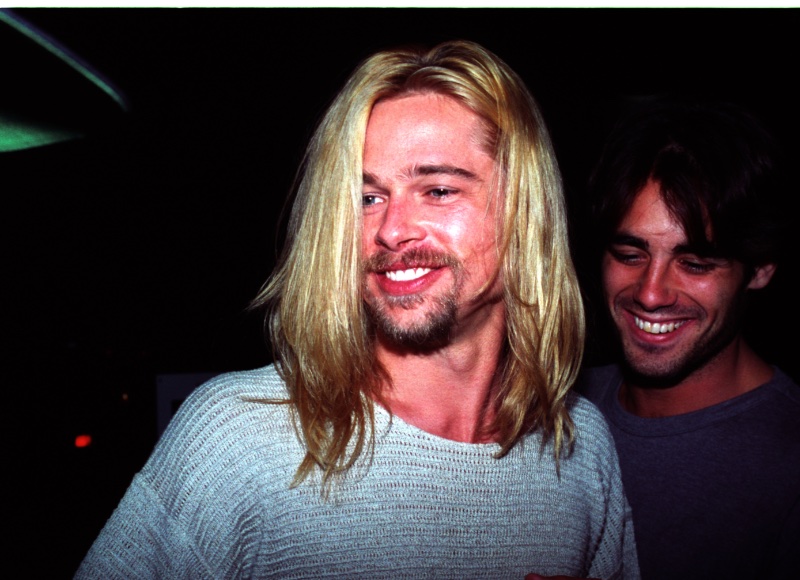
90s fashion for men marked a turning point in how style expressed identity. In the nineties, bold trends and subcultural influences collided, fueled by pop culture icons who made individuality the era’s signature.
From baggy jeans and cargo pants to oversized tees and chunky sneakers, late 90s fashion for men pushed this spirit further, favoring exaggerated silhouettes over the restraint of earlier minimalism.
The influence endured. Y2K men’s fashion introduced tech-driven elements—metallic finishes, futuristic cuts—that built on the 90s foundation. Casual 2000s men’s fashion carried this forward, combining laid-back pieces with statement-making details while keeping personal expression at the forefront.
